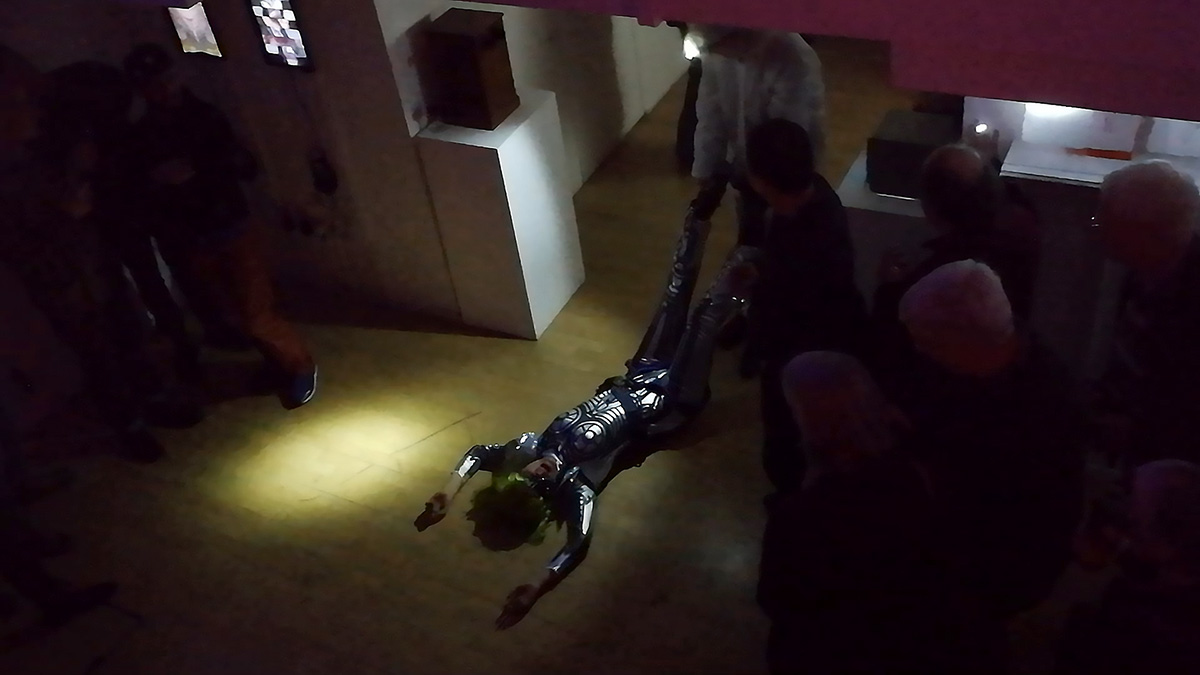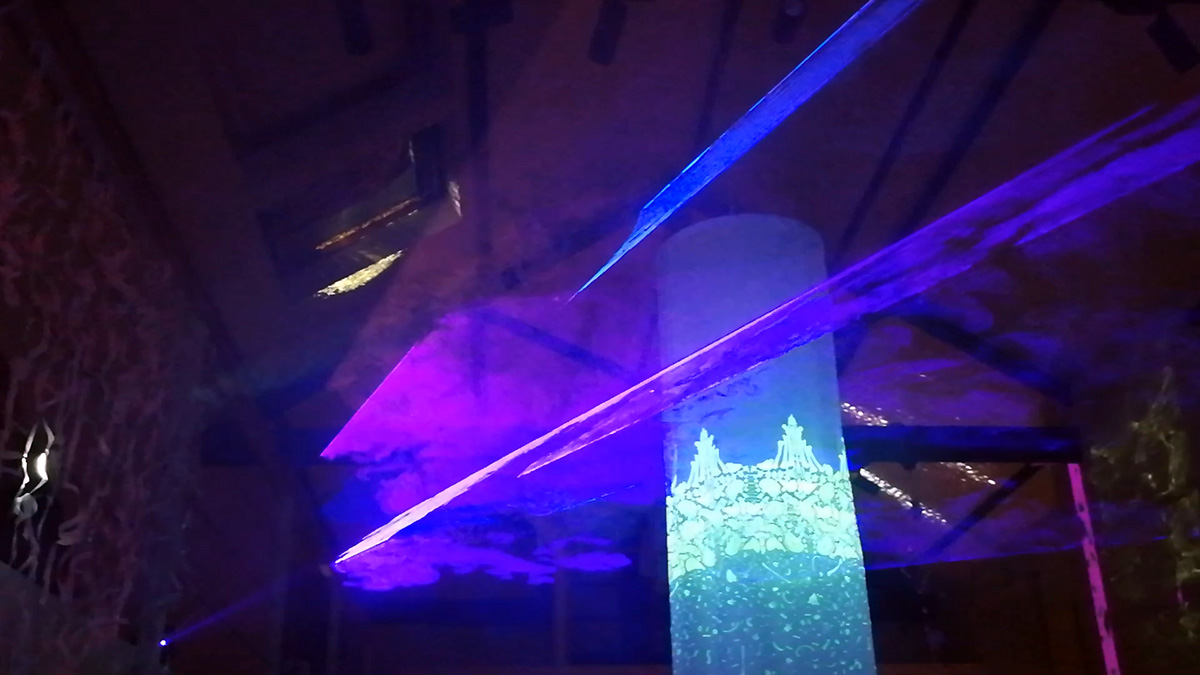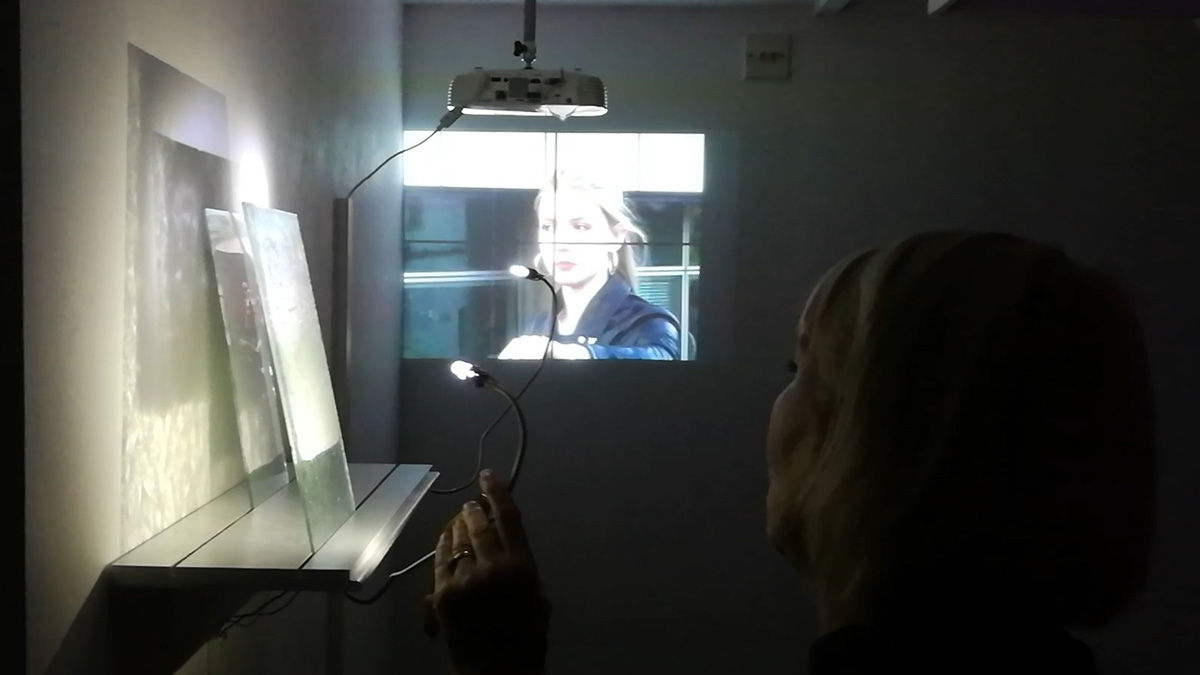Thanks to the Computer Arts Society for part funding the exhibition and to Susan Haire for use of The Cello Factory.
“I like death. I like lights. It’s like a Death Disco. That’s where I’d like to go when I die.”
Young woman commenting on In the Dark 2020 : Even Darker.

It was darker. Just.
The 2020 show was book ended by two remarkable performances. One by friend of The Group, Ann Grim, suspending her future robot self from the beam of the Cello Factory for the PV night eventually to be cut down by a mere human assistant, electronically eviscerated and then dragged out of the building, presumably to the spare-parts dump. (Thanks to Almuth Tebbenhoff for throwing herself into helper mode at the last minute.) The second performance 3 days later on the closing night was by Blanc Sceol who seemed to travel back in time using the end wall which Victoria Rance had decorated as a ‘psycho-sonographic’ zone with self-created instruments, found objects, voice, music and text. A packed Cello Factory seemed transfixed by the other-worldly breadth of the piece.
In between these signposts to future and past times, sat the present show, where over 30 artists came to terms with making art in the dark. There were more London Group members this year, more contained pieces but also more casual collaborations, and more lasers which cut through several works incising the Cello Factory into the future – or past when the smog machine was pressed into action reminding us all of those 80s discos and 90s raves. The Computer Arts Society naturally supplied the most technically advanced pieces, but also several computer works made originally in the pioneering 70s, recreated for the present, signaling the persistence of this way of making art. Art in Flux joined the exhibition this year and it was good to see their contemporary takes on technology.

This year, following discussions with Peter Clossick and Darren Nisbett, a tactile room was introduced in the upstairs space, which had people fingering (or bashing in one case) their way around the ‘touchy-feely’ walls. One sense that was missing was smell – a few people suggested this idea perhaps as some kind of grounding to the perceived screen heavy cybernetic qualities of the show. At one point we were looking to house Eric Fong’s recent work Thanatos (the smell of death) but he warned us against this, so instead we showed his recreation of a dead body next to two digital pieces which saw pixels in a battle between life and death, creation and destruction.
Several huge hangings loomed across the space – indeed there were no size restrictions and In the Dark is really allowing members to stretch out. These ‘monsters’ were begging to be projected onto – and not all of them were. This was due to running out of equipment as we tried to bring less kit this year. With better planning this can be improved and there are already rumours of a more collaborative model next year.

It was great to see members tackling the light restrictions of the show. Light-boxes and LEDs were employed by artists not normally associated with such materials. Erika Winstone for example layered a detailed light performance onto her piece in the show. Now that we can see what conversations In the Dark offers -and part of the idea was always to get art works to spill over and cross-communicate -hopefully even more members will get involved in working in this way.
Thanks to all the artists for making the show a success again, with 500 visitors and plenty of illuminations, provocations and excitations.
Photos including all the artists and artworks involved can be seen on the Flickr website for the show.
Tim + Nicola
Genetic Moo
